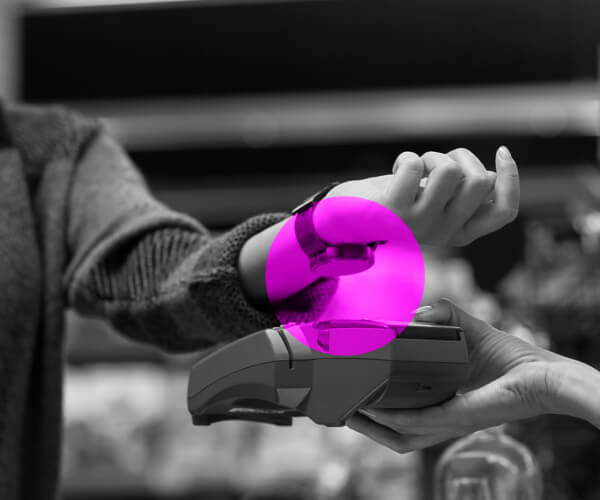Insights To Ignite Desired Shopper Behaviors In Today’s Complex And Always-on Shopper Environment
 In today’s rapidly evolving and interconnected world, understanding and influencing shopper behaviors has become a key aspect of successful shopper marketing strategies. The emergence of multi-channel shopping experiences that encompass physical, digital, and social media channels, has added complexity to our understanding of shopper journeys. To navigate this complexity, businesses need comprehensive insights into the touchpoints that influence shoppers, their motivations, navigation patterns, and purchase considerations. This article explores the seven key questions businesses often need to answer to ignite the sparks for desired shopper behaviors; and offers insights and best practices based on the over 200 shopper journey studies Behaviorally has conducted over the past three years using its holistic shopper journey research suite designed to understand and influence shoppers in today’s seamlessly multi-channel world.
In today’s rapidly evolving and interconnected world, understanding and influencing shopper behaviors has become a key aspect of successful shopper marketing strategies. The emergence of multi-channel shopping experiences that encompass physical, digital, and social media channels, has added complexity to our understanding of shopper journeys. To navigate this complexity, businesses need comprehensive insights into the touchpoints that influence shoppers, their motivations, navigation patterns, and purchase considerations. This article explores the seven key questions businesses often need to answer to ignite the sparks for desired shopper behaviors; and offers insights and best practices based on the over 200 shopper journey studies Behaviorally has conducted over the past three years using its holistic shopper journey research suite designed to understand and influence shoppers in today’s seamlessly multi-channel world.
1. Seed: Touchpoints that Influence Shoppers
The media landscape is saturated with options and content competing for shoppers’ attention. While shoppers spend a significant amount of time online daily, only a small portion of that time is dedicated to shopping. It takes approximately six exposures to marketing touchpoints to drive a transaction. Retail stores, both physical and digital, play a crucial role in influencing new product discoveries, accounting for 60-90% of such discoveries. However, it is essential to adopt a diverse strategy as a range of content and channels have the potential to inform and influence purchase. For example, online reviews influence a substantial portion (40-53%) of consumers even when they are making in-store purchases. Video content and social media also have a notable impact on shopping decisions, affecting 13-40% and 9-33% of new trials, respectively. To leverage these touchpoints, businesses should explore the influence ecosystem within their category and collaborate with retailers to enhance the retail channel’s power. Additionally, the use of video content, particularly short form, tailored to the platform’s content, can effectively engage shoppers.
2. Start: Missions and Motivations in the Category
CPG shopping is often routine or habitual, accounting for 60-90% of purchases. However, up to 60% of shoppers also admit to making impulse purchases, especially online. Interrupting rote purchases is crucial to sparking new trials within a category. Various tactics can be employed, such as triggering a memory, sparking curiosity, fulfilling stock-up needs, and enticing shoppers with special offers. Understanding shoppers’ motivations, patterns, and information preferences is vital, as 20-66% of consumers conduct pre-shopping research, depending on the category. With an understanding of where consumers research, businesses can influence the information consumers receive about the category. Leveraging social tech, referral links within blogs and articles, nostalgic-style ads, and restock reminders present ideas businesses can test in order to find ways to disrupt rote purchases and encourage new trials.
3. Situate: Shoppers’ Navigation and Deselection
When selecting retailers, consumers prioritize price, choice, availability, convenience, and ease. Generation Z exhibits higher impulsiveness in retailer selection compared to older generations, emphasizing the importance of understanding different demographic preferences, attitudes, and motivations in your category. When narrowing down options, shoppers may deselect due to insufficient presence or engagement in-store or poor retailer website content. Product location confusion is also a significant factor, accounting for 22-54% of deselections or cart abandonments. To drive selection, businesses should partner with retailers to guide shoppers in-store and optimize website navigation patterns. Retailer exclusives, special drops, and retailer media networks can also be leveraged to drive selection. That said, striking the right balance between choice and manageable selection is crucial to aid shoppers’ navigation.
4. Seen: Products That Are Seen and Not Missed
 Product visibility on the shelf poses a significant challenge due to the abundance of options. Shelf confusion hinders more than half of shopping trips, and perceived or real unavailability leads to purchase abandonment. In-store efficiency is crucial, with 51% of shoppers having a specific brand in mind while shopping. Online, the search bar plays a vital role in product discovery, accounting for one in five purchases. To overcome visibility barriers, businesses can leverage brand cues, such as brand blocking and optimized shelf placement. Online optimization of thumbnails, which should be recognizable as the brand and product, can also enhance visibility. Monitoring trending keywords and optimizing in-site searches ensure that products are easily found by shoppers.
Product visibility on the shelf poses a significant challenge due to the abundance of options. Shelf confusion hinders more than half of shopping trips, and perceived or real unavailability leads to purchase abandonment. In-store efficiency is crucial, with 51% of shoppers having a specific brand in mind while shopping. Online, the search bar plays a vital role in product discovery, accounting for one in five purchases. To overcome visibility barriers, businesses can leverage brand cues, such as brand blocking and optimized shelf placement. Online optimization of thumbnails, which should be recognizable as the brand and product, can also enhance visibility. Monitoring trending keywords and optimizing in-site searches ensure that products are easily found by shoppers.
5. Shoppable: Key Considerations Driving Purchase
Understanding the purchase consideration drivers and decision hierarchy is essential for effective shopper marketing. Price and value are primary considerations for most consumers. However, factors like quality, product features, and the reputation of a trustworthy brand also significantly influence purchase decisions. It is important to recognize that this decision hierarchy can vary across retailers, channels, and journey stages. Businesses must gain a comprehensive understanding of purchase consideration drivers in their category, overall and by retailer. The importance of brand and product features within the decision hierarchy should be evaluated and optimized. Identifying key moments of truth in consumers’ decision-making process enables businesses to optimize messaging at each stage of the journey.
6. Seductive: Making Products Compelling to Consumers
Many purchases are “gut-based” choices driven by emotion rather than extensive rational deliberation. Grabbing shoppers’ attention in those crucial few seconds when they make decisions is essential. Visual elements play a significant role, as 90% of information processed by the brain is visual. Impulse purchases are often based on a visceral reaction to imagery that differentiates a product at the shelf. As stated above, Gen Z shoppers are particularly inclined to make impulse purchases. To make products compelling, businesses should strive to convey benefits clearly and concisely, appeal to emotions through packaging and POS materials, resonate with imagery that fits the brand and the shopper’s aspirations, and highlight curated features and benefits that differentiate the product. Leveraging distinctive brand assets and earned equity online further enhances product appeal.
7. Selected: Evaluating Shopper Satisfaction
Positive usage experiences can lead to customer loyalty and advocacy. Encouraging engagement after purchase, leveraging savvy shoppers, and incentivizing referrals and recommendations foster brand awareness and encourage future repurchases. While most shoppers do not voluntarily leave positive reviews unless prompted, more than 40% will do so if they had a positive experience. Price, quality, and positive product features are often mentioned in reviews. Tracking the quality of shopper experience and actively encouraging positive reviews is recommended. The quantity and average rating of reviews matter, but relatable reviews carry the most weight. Collaborating with retailers to include filters that make reviews relatable, such as age, size, or skin condition, further enhances the impact of user-generated content.
In summary, igniting desired shopper behaviors in today’s complex and always-on shopper environment requires a deep understanding of touchpoints, motivations, navigation patterns, and purchase considerations. Answering the seven common business questions presented in this article is a starting point for businesses to uncover insights that drive effective shopper marketing strategies. That said, for a more tailored category understanding on influencing shoppers through diverse touchpoints; disrupting routine purchases; guiding navigation; enhancing product visibility and understanding; as well as optimizing the shopper journey, consider Behaviorally’s TransactionPath™ suite of services.
TransactionPath is a holistic suite of research approaches to answer common shopper journey questions in today’s multi-channel shopper reality. It includes qualitative research, quantitative research, and digital behavior understanding to provide deep insights into behaviors, motivations, and attitudes of today’s shoppers. By mapping the path to purchase, identifying key opportunities and moments that matter, quantifying purchase drivers, and uncovering digital and physical tactics, TransactionPath empowers businesses to optimize their strategies. The suite includes ShelfPath, video-based shop-alongs to observe behavioral patterns across the shopper journey, DecisionPath, a behavioral survey to understand and quantify consumer decisions, DigiTraffic, category behavior analytics to illuminate search behavior and website interactions, and DigiFootprint, shopper behavior analytics to explore digital activity and uncover touchpoints and influencers.
Contact us today to learn more.
THE AUTHOR

Nisha Yadav is the Senior Vice President, Omni Shopper Lead at Behaviorally. She has over 15 years of experience as a marketing strategist offering insight-led, brand, product, and customer strategy to storied brands. Before joining Behaviorally, Nisha led Global Brand Research at MetLife and her career includes progressive roles leading marketing insights and strategy teams on the agency and client-side alike.
